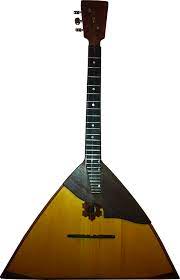Uncover the enchanting melodies and rich cultural heritage of traditional Russian folk songs. From lively dance tunes to soulful ballads, immerse yourself in the captivating world of Russian folk music.
The Origins and History of Russian Folk Music
Russian folk music has a long and fascinating history that dates back centuries. It is deeply rooted in the traditions and customs of the Russian people, reflecting their way of life, beliefs, and emotions.
The origins of Russian folk music can be traced to ancient Slavic rituals and ceremonies. These early musical traditions were passed down through generations, evolving and adapting over time. With the influence of various cultural and historical factors, Russian folk music developed into a unique art form that captures the essence of Russian culture.
In the past, folk songs were an integral part of everyday life for the Russian people. They were sung during work, celebrations, and gatherings, serving as a means of communication, entertainment, and expression. Russian folk music played a significant role in preserving the cultural identity and heritage of the Russian people.
Over the years, Russian folk music has continued to evolve and thrive. It has been influenced by various musical styles and genres, including classical music, jazz, and rock. Today, Russian folk music is celebrated and cherished for its beauty, authenticity, and emotional depth.
Distinctive Features of Russian Folk Songs
Russian folk songs are known for their distinctive melodies, lyrics, and vocal techniques. They often feature modal scales and unique melodic patterns that give them a distinct sound.
The lyrics of Russian folk songs are deeply poetic and often tell stories of love, nature, and historical events. They are characterized by rich symbolism, metaphors, and vivid imagery, allowing listeners to connect with the emotions and experiences portrayed in the songs.
Another notable feature of Russian folk songs is the use of vocal techniques such as melisma, where multiple notes are sung on a single syllable, and yodeling, where the voice rapidly switches between chest voice and falsetto. These techniques add depth and expressiveness to the songs, enhancing their emotional impact.
Russian folk songs also incorporate a wide range of instruments, including the balalaika, accordion, domra, and gusli. These instruments contribute to the unique sound and texture of Russian folk music, adding layers of melody and rhythm.
Popular Instruments in Russian Folk Music
 Russian folk music is characterized by the use of various traditional instruments. One of the most iconic instruments is the balalaika, a triangular-shaped string instrument with a distinctive plucked sound. The balalaika is often associated with Russian folk music and is used to accompany both solo performers and ensembles.
Russian folk music is characterized by the use of various traditional instruments. One of the most iconic instruments is the balalaika, a triangular-shaped string instrument with a distinctive plucked sound. The balalaika is often associated with Russian folk music and is used to accompany both solo performers and ensembles.
Another popular instrument in Russian folk music is the accordion. This versatile instrument can produce a wide range of sounds and is commonly used in folk dances and lively tunes. The accordion adds a vibrant and energetic element to Russian folk music.
The domra is a string instrument similar to a mandolin and is frequently used in Russian folk ensembles. It has a bright and resonant sound that complements the melodies of folk songs.
The gusli, a traditional Russian string instrument, is known for its delicate and ethereal sound. It is often played during ballads and slower-paced folk songs, adding a touch of melancholy and nostalgia to the music.
These instruments, along with others like the bayan (a type of button accordion) and the zhaleika (a Russian wind instrument), play a crucial role in creating the unique and enchanting sound of Russian folk music.
Regional Variations of Russian Folk Songs
Russia is a vast and diverse country, and as such, there are regional variations in Russian folk songs. Each region has its own unique musical traditions, styles, and repertoire.
In the northern regions of Russia, folk songs often reflect the harsh and cold climate, with lyrics that describe the beauty of snow-covered landscapes and the struggles of daily life. These songs are often accompanied by instruments like the balalaika and accordion.
In the central regions, folk songs are characterized by lively melodies and energetic rhythms. They are often sung during traditional dances and celebrations, accompanied by instruments like the domra and gusli.
In the southern regions, folk songs have a more melodic and lyrical quality, influenced by the rich cultural heritage of the Cossack people. These songs often depict themes of love, bravery, and nature, and are accompanied by instruments like the balalaika and bayan.
The eastern regions of Russia have their own distinct musical traditions, with folk songs that reflect the unique cultural influences of Siberia and the Far East. These songs often incorporate indigenous instruments and vocal styles, creating a fusion of traditional Russian and indigenous music.
The diversity of regional variations in Russian folk songs adds to the richness and complexity of Russian folk music as a whole.
Preservation and Revival of Russian Folk Music
In recent years, there has been a renewed interest in preserving and reviving Russian folk music. Efforts have been made to collect and document traditional songs, ensuring that they are passed down to future generations.
Various folk music ensembles and festivals have been established to showcase Russian folk music and provide a platform for talented musicians and performers. These events celebrate the beauty and cultural significance of Russian folk music, helping to keep the tradition alive.
Additionally, educational programs and workshops have been organized to teach young people about Russian folk music and encourage them to learn traditional instruments and songs. This has played a crucial role in revitalizing interest in Russian folk music among the younger generation.
Through these preservation and revival efforts, Russian folk music continues to thrive and evolve, captivating audiences around the world with its timeless melodies and rich cultural heritage.
Tags:
Russia
04-Feb-2024 08:29:36
Related Articles





Write a Comment